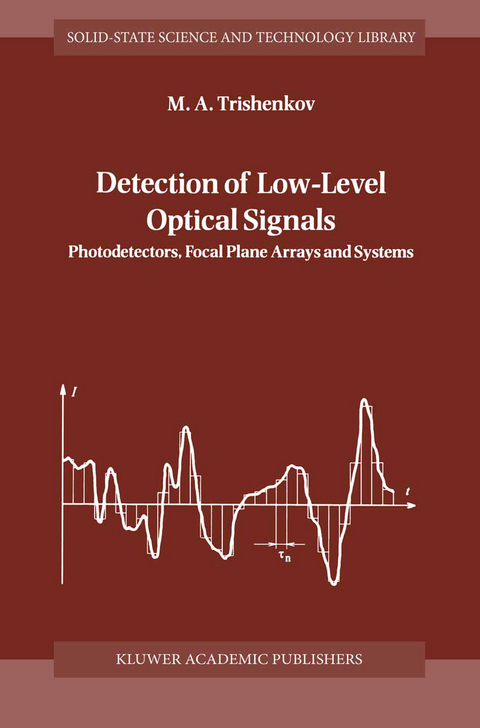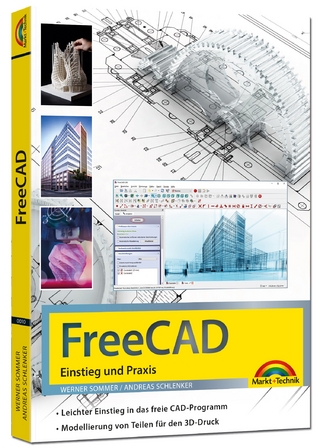
Detection of Low-Level Optical Signals
Springer (Verlag)
978-90-481-4892-9 (ISBN)
This book is addressed to designers of photodetectors and photodetecting systems, designers of focal plane arrays, charge-coupled devices, specialists in IR technologies, designers of optoelectronic detecting, guiding and tracking systems, systems for IR direction finders, lidars, lightwave communication systems, IR imagers. All these specialists are united by one common purpose: they are all striving to catch the weakest possible optical signal. The most important characteristic of photosensitive devices is their detectivity, which determines the lowest level of optical signal they are able to detect above the noise level. These threshold characteristics define the most important tactical and technical parameters of the entire optoelectronic system, such as its range, resolution, precision. The threshold characteristics of optoelectronic system depend on many of its components; all designers agree, however, that the critically responsible part of the system is the photodetector [1]. By the end of the 1960s the physicists and the engineers were able to overcome many obstacles and to create photodetectors (at least single-element or few-element ones) which covered all the main optical bands (0. 4 . . . 2,2 . . . 3, 3 . . . 5,8 . . . 14 J. . Lm), carried out the detection almost without any loss (the quantum yield being as high as 0. 7 . . . 0. 9), and reduced the noise level to the lowest possible limit.
1. Photodetecting Assembly as Detection System for Weak Optical Signals.- 1.1. Functions and Structure of Photodetecting Assembly, CCD, and Other Charge Accumulation Devices.- 1.2. Photodetectors.- 1.3. Amplifier.- 2. Signal and Noise in Photodetecting Assemblies.- 2.1. Pulsed Optical Signal.- 2.2. Basic Notions of Noise Process.- 2.3. Photodetector Noise.- 2.4. Noises of Photodetecting Assembly.- 2.5. Minimization of Photodetecting Assembly Noises.- 3. Foundations of Theory of Optimal Filtering as Applied to Photodetecting Assemblies.- 3.1. Signal — No Signal Decision Making.- 3.2. Optimal Filter (Frequency Analysis).- 3.3. SNR at the Output of Optimal Filter (Frequency Analysis).- 3.4. Noise Equivalent Power, Detectivity, and Other Detection Invariants.- 4. Optimal Filtering of Photo Signals (Time-Domain Analysis).- 4.1. Pulse Characteristic of Optimal Filter.- 4.2. Shape of Signal at the Output of Optimal Filter.- 5. Signal Processing in Real Photodetecting Assemblies ..- 5.1. Quasi-Optimal Filtering.- 5.2. Loss in SNR in Quasi-Optimal Filter.- 5.3. Broad-Band Amplification.- 6. Detection of Weak Optical Signals with Photodetecting Assemblies Based on Avalanche Photodiodes.- 6.1. Broad-Band Amplification and Quasi-Optimal Filtering in Photodetecting Assemblies Based on Avalanche Photodiodes.- 6.2. Quantization and Fluctuation of Signal.- 6.3. Photon Counting Mode of Avalanche Photodiode.- 7. Detection and Processing of Optical Signals in Matrices.- 7.1. Integration Cell As Quasi-Optimal Filter.- 7.2. Multielement Traditional-Type Photodetecting Assemblies and Focal Plane Arrays.- 8. Detection of Weak Optical Signals in Special-Purpose Optoelectronic Systems.- 8.1. Timing of Arrival of Optical Pulse.- 8.2. IR Imager.- Conclusion.- References.
| Erscheint lt. Verlag | 3.12.2010 |
|---|---|
| Reihe/Serie | Solid-State Science and Technology Library ; 4 |
| Zusatzinfo | XXII, 458 p. |
| Verlagsort | Dordrecht |
| Sprache | englisch |
| Maße | 155 x 235 mm |
| Themenwelt | Informatik ► Grafik / Design ► Digitale Bildverarbeitung |
| Informatik ► Theorie / Studium ► Künstliche Intelligenz / Robotik | |
| Naturwissenschaften ► Physik / Astronomie ► Optik | |
| Technik ► Elektrotechnik / Energietechnik | |
| Technik ► Fahrzeugbau / Schiffbau | |
| ISBN-10 | 90-481-4892-8 / 9048148928 |
| ISBN-13 | 978-90-481-4892-9 / 9789048148929 |
| Zustand | Neuware |
| Informationen gemäß Produktsicherheitsverordnung (GPSR) | |
| Haben Sie eine Frage zum Produkt? |
aus dem Bereich


